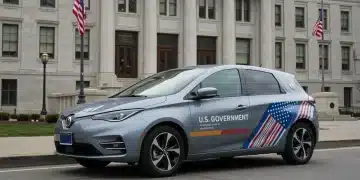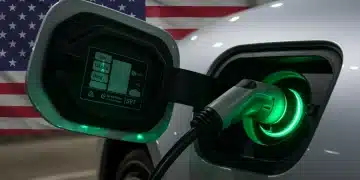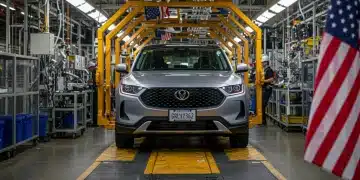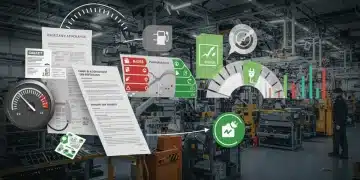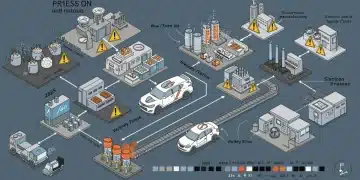Act Now: Secure 2025 EV Tax Credits Up To $7,500 By Dec 31st
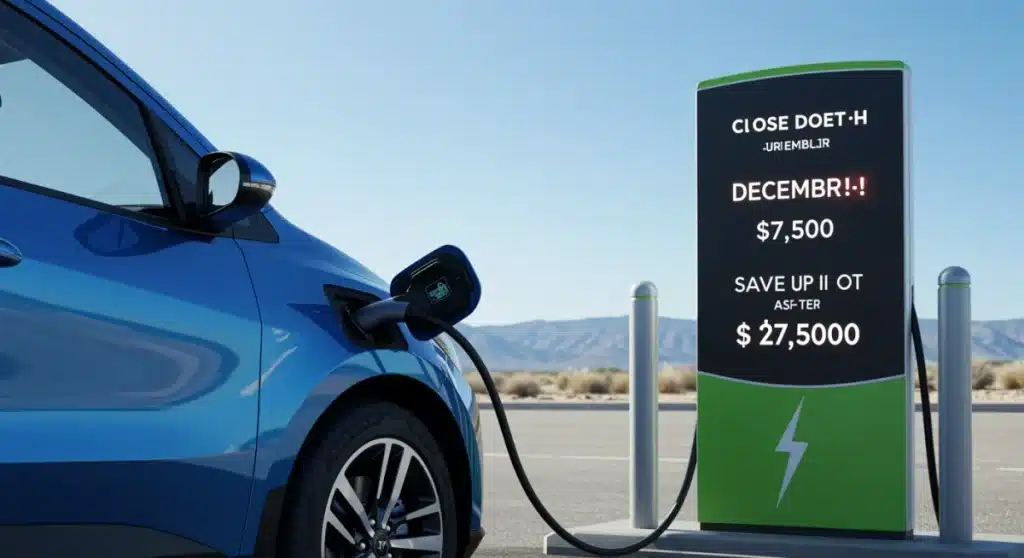
The window to secure up to $7,500 in 2025 EV tax credits is closing, with potential eligibility changes taking effect after December 31st, requiring immediate action from prospective buyers.
As the year draws to a close, prospective electric vehicle (EV) buyers face a critical deadline: acting before December 31st to potentially secure up to 2025 EV Tax Credits worth $7,500. This time-sensitive opportunity is crucial as eligibility rules are poised for significant revisions, directly impacting which vehicles qualify and how much incentive consumers can claim in the new year.
The Urgency of the December 31st Deadline
The impending December 31st deadline is not merely a calendar date; it marks a pivotal moment for electric vehicle purchasers. The current tax credit structure, offering up to $7,500 for eligible new EVs, is set to undergo revisions. These changes, primarily focused on battery component sourcing, could significantly reduce the number of qualifying vehicles for the 2025 tax year.
Consumers who complete their EV purchase and take delivery before the end of the year may still qualify under the existing, more lenient, criteria. This creates a powerful incentive for immediate action, as waiting until January 1st could mean missing out on substantial savings.
Understanding the Impending Changes
The U.S. Treasury Department and Internal Revenue Service (IRS) continually refine the rules governing the clean vehicle tax credit, established under the Inflation Reduction Act (IRA). The most significant adjustments anticipated for 2025 relate to the battery components’ country of origin.
- Foreign Entity of Concern (FEOC): Beginning January 1, 2025, vehicles containing battery components manufactured or assembled by a ‘foreign entity of concern’ will be ineligible for any portion of the tax credit.
- Critical Minerals Sourcing: Stricter requirements for the sourcing of critical minerals are also expected to come into full effect, further narrowing the field of eligible vehicles.
- Impact on Vehicle Availability: Many popular EV models that currently qualify might lose their eligibility status, making the current window a prime opportunity.
Navigating Eligibility for the $7,500 Credit
Securing the full $7,500 tax credit requires meeting several criteria, both for the vehicle itself and the buyer. Understanding these requirements is paramount for anyone looking to capitalize on this incentive before the year’s end.
The credit is divided into two halves: $3,750 for meeting critical mineral requirements and another $3,750 for battery component requirements. Both halves are subject to domestic sourcing and manufacturing stipulations, which are becoming progressively stringent.
Key Vehicle Requirements
For a new clean vehicle to qualify for the credit, it must meet specific manufacturing and battery sourcing criteria. These rules are designed to bolster domestic production and supply chains.
- Final Assembly in North America: The vehicle must have undergone final assembly in North America. This requirement has been a consistent factor since the IRA’s implementation.
- MSRP Limits: Sedans must have a Manufacturer’s Suggested Retail Price (MSRP) of $55,000 or less, while SUVs, trucks, and vans are capped at $80,000.
- Battery Component Sourcing: A certain percentage of battery components must be manufactured or assembled in North America. This percentage increases annually, making 2025’s rules even tougher.
Buyer Income Limitations
Beyond vehicle eligibility, individual and household income limits apply to those claiming the credit. These limits are in place to ensure the incentives benefit a broad range of taxpayers.
- Modified Adjusted Gross Income (MAGI): For individuals, the MAGI limit is $150,000. For heads of household, it’s $225,000, and for married couples filing jointly, it’s $300,000.
- Current Year vs. Prior Year: Buyers can use their MAGI from the year the vehicle was delivered or the prior year, whichever is less. This flexibility can be beneficial for those whose income fluctuates.
How to Act Before December 31st
For consumers eyeing an EV purchase, acting decisively before December 31st is crucial. The process involves several steps to ensure eligibility and timely delivery.
First, identify eligible vehicles. The IRS provides a continuously updated list of qualified clean vehicles. Cross-referencing this list with available inventory is the initial step. Due to high demand and potential shipping delays, securing a vehicle that can be delivered before the deadline is paramount.
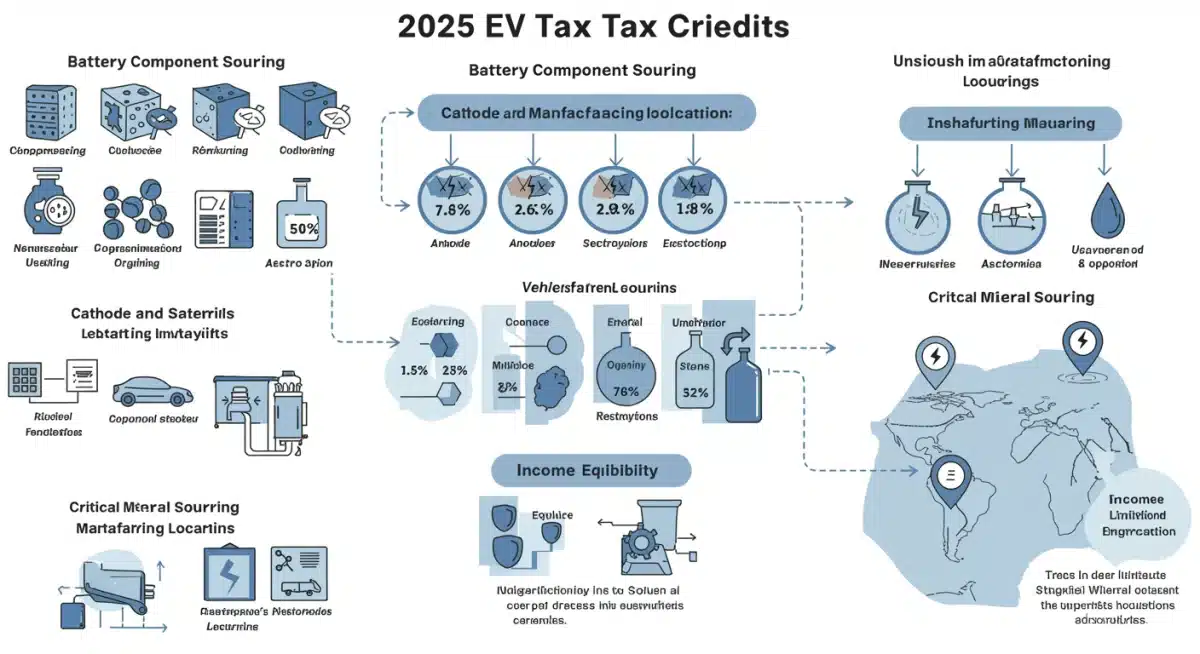
Steps for Prospective Buyers
Prospective buyers should engage with dealerships immediately to confirm vehicle availability and delivery timelines. Many dealerships are aware of the impending changes and are working to facilitate purchases.
- Verify Eligibility: Double-check the vehicle’s eligibility on the official IRS website. This list is subject to change, so recent verification is vital.
- Confirm Delivery Date: Ensure the dealer can guarantee delivery and transfer of title before December 31st. A binding contract alone might not suffice if delivery occurs in January.
- Consult a Tax Professional: Discuss your individual tax situation with a qualified tax advisor to understand how the credit will apply to your specific circumstances.
The Role of Dealerships and Manufacturers
Dealerships and EV manufacturers play a significant role in helping consumers navigate these complex regulations. Many are proactively communicating with customers about the deadline and available inventory.
Manufacturers are also adapting their supply chains to meet the evolving requirements for critical minerals and battery components. However, these changes take time, meaning that current eligibility might be the best opportunity for some models.
Manufacturer Disclosures and Inventory
Manufacturers are required to provide information on their vehicles’ eligibility status. This transparency is key for consumers making informed decisions.
- Dealers as Information Hubs: Dealerships are often the first point of contact for buyers. They should be equipped with the latest information on qualifying models and how the tax credit applies.
- Limited Inventory: As the deadline approaches, inventory of currently eligible models may become scarce. This scarcity could lead to increased pressure to purchase quickly.
Looking Ahead: 2025 and Beyond
The landscape of EV tax credits is dynamic, with ongoing adjustments expected. While the December 31st deadline is critical for current incentives, the market will continue to evolve in 2025 and beyond.
The stricter battery component and critical mineral sourcing rules taking effect in January 2025 will undoubtedly impact the list of eligible vehicles. Buyers who miss the current window will need to re-evaluate their options based on the new criteria.
Anticipated Market Shifts
The changes are expected to drive more domestic manufacturing and sourcing of EV components, aligning with the IRA’s broader goals. This long-term shift will ultimately benefit U.S. industry and consumers.
- New Models and Eligibility: As manufacturers adjust their supply chains, new EV models or existing ones with revised components may gain eligibility throughout 2025.
- Used EV Credit: The used clean vehicle tax credit, offering up to $4,000, will continue to be an option for buyers, providing an alternative pathway to affordability.
- State and Local Incentives: Beyond federal credits, state and local incentives often exist, which can further reduce the cost of EV ownership and should be explored.
Potential Impact on EV Adoption Rates
The ebb and flow of federal tax credits significantly influence EV adoption rates. The current urgency to purchase before December 31st highlights the immediate impact of these incentives on consumer behavior.
The potential reduction in eligible vehicles starting in 2025 could temporarily slow the pace of EV sales for certain segments. However, the long-term trend towards electrification, supported by sustained policy and technological advancements, is expected to continue.
Consumer Behavior and Market Dynamics
The ‘use-it-or-lose-it’ nature of the current credit structure before the deadline is likely to drive a surge in year-end sales. This dynamic underscores the importance of clear and timely communication from government agencies and industry stakeholders.
- Informed Decisions: Consumers armed with accurate and up-to-date information are better positioned to make purchasing decisions that maximize their savings.
- Manufacturer Strategies: EV manufacturers will continue to adapt their strategies to meet the evolving regulatory landscape, focusing on compliant supply chains.
- Policy Evolution: The ongoing evolution of EV tax credit policies reflects a broader commitment to accelerating the transition to clean energy transportation, even as the specifics of implementation are refined.
| Key Point | Brief Description |
|---|---|
| December 31st Deadline | Last day to secure current EV tax credit eligibility before stricter 2025 rules take effect. |
| $7,500 Max Credit | Maximum federal tax credit available for qualifying new electric vehicles. |
| FEOC Rule (2025) | Vehicles with battery components from ‘Foreign Entities of Concern’ become ineligible. |
| Eligibility Criteria | Includes North American final assembly, MSRP limits, and buyer income thresholds. |
Frequently Asked Questions About EV Tax Credits
Beginning January 1, 2025, new rules will disqualify vehicles containing battery components sourced from a ‘foreign entity of concern’ (FEOC) from receiving any portion of the federal tax credit. This significantly narrows the list of eligible EVs.
To qualify, you must purchase and take delivery of an eligible new EV before December 31st. Verify the vehicle’s eligibility on the IRS website, confirm North American final assembly, and ensure your income meets MAGI limits.
Yes, income limits apply. Your modified adjusted gross income (MAGI) must be below $150,000 for individuals, $225,000 for heads of household, or $300,000 for married couples filing jointly.
Eligibility is determined by the date of vehicle delivery. If your EV is delivered in 2025, it will be subject to the new, stricter eligibility rules, regardless of when the purchase agreement was signed.
Yes, some EVs will continue to qualify, but the list is expected to shrink significantly due to the FEOC and critical mineral sourcing requirements. Manufacturers are working to adapt supply chains to meet future criteria.
What Happens Next
The immediate impact of the December 31st deadline will be a flurry of activity in the EV market as consumers and dealerships race to complete eligible transactions. Looking ahead to 2025, the market will adjust to the revised tax credit landscape. We anticipate manufacturers will increasingly focus on developing supply chains that comply with the stricter battery component and critical mineral sourcing rules. This will likely lead to a temporary reduction in the number of qualifying models, followed by a gradual increase as new compliant vehicles enter the market. The long-term trajectory for EV adoption remains strong, driven by innovation and continued policy support, but the immediate future demands careful attention to these evolving regulations.
